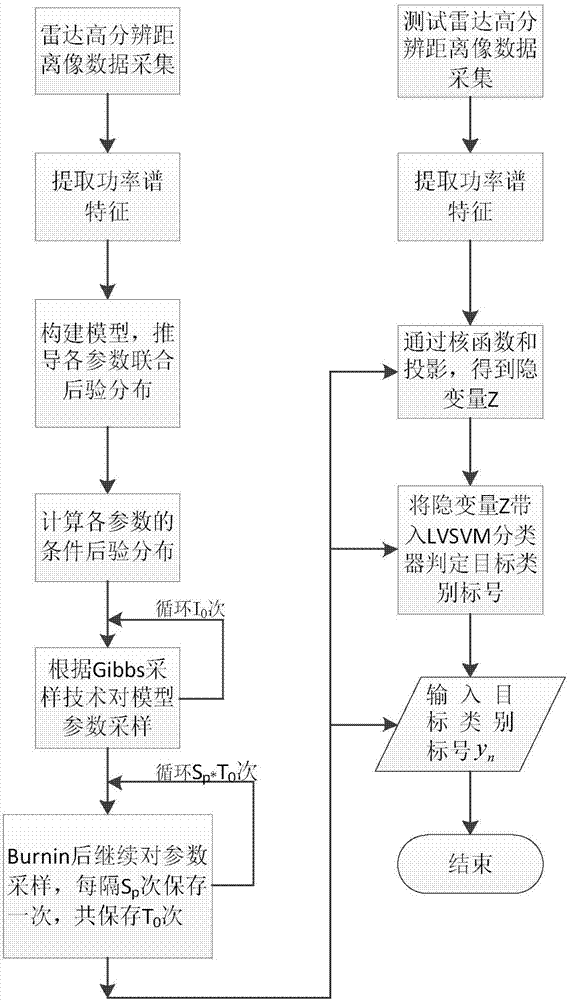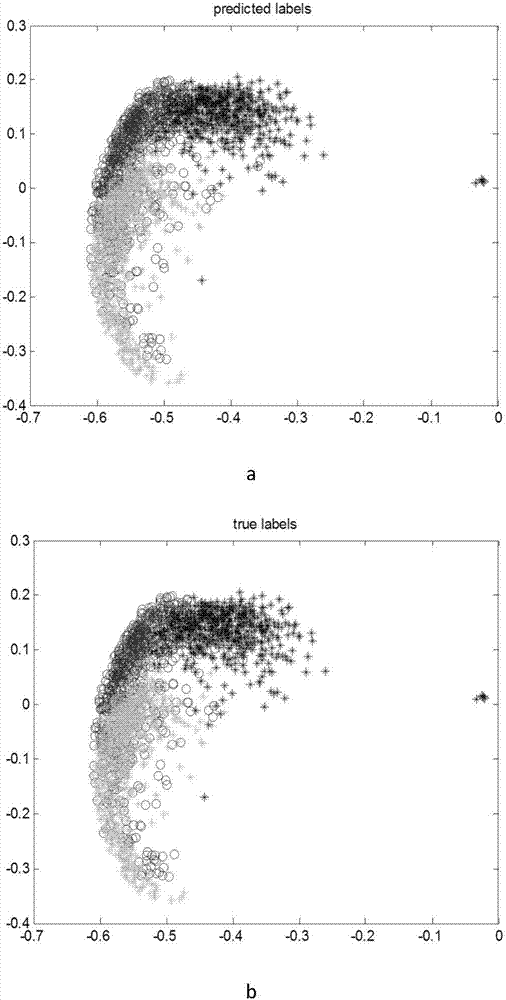Radar Target Recognition Method Based on Large Boundary Nonlinear Discriminant Projection Model
A radar target, nonlinear technology, applied in the radar field, can solve the problems of indistinguishable subspace and classifier learning, and achieve the effect of simplifying the solution complexity, avoiding conflicts, and improving the classification performance
- Summary
- Abstract
- Description
- Claims
- Application Information
AI Technical Summary
Problems solved by technology
Method used
Image
Examples
Embodiment Construction
[0040] refer to figure 1 , the radar target recognition method based on the nonlinear discriminant projection model of the large boundary of the present invention, its specific implementation steps are as follows:
[0041] Step 1: Receive the HRRP data of the high-resolution range image of the radar target to generate training data.
[0042] 1a) The radar receives the high-resolution range images of C types of targets, extracts features from these high-resolution range images, and obtains the power spectrum feature x of each high-resolution range image n , using the power spectrum features of these high-resolution range images to form a training sample set X={x 1 ,x 2 ,...x n ,...x N},x n It is the nth training sample in the training set X, n=1, 2,...N, N represents the total number of samples in the training sample set X;
[0043] 1b) with y={y 1 ,y 2 ,...,y n ,...,y N} to record the category label of each training sample in the training sample set X, y n ∈{1,2,…,C...
PUM
 Login to View More
Login to View More Abstract
Description
Claims
Application Information
 Login to View More
Login to View More - R&D
- Intellectual Property
- Life Sciences
- Materials
- Tech Scout
- Unparalleled Data Quality
- Higher Quality Content
- 60% Fewer Hallucinations
Browse by: Latest US Patents, China's latest patents, Technical Efficacy Thesaurus, Application Domain, Technology Topic, Popular Technical Reports.
© 2025 PatSnap. All rights reserved.Legal|Privacy policy|Modern Slavery Act Transparency Statement|Sitemap|About US| Contact US: help@patsnap.com



